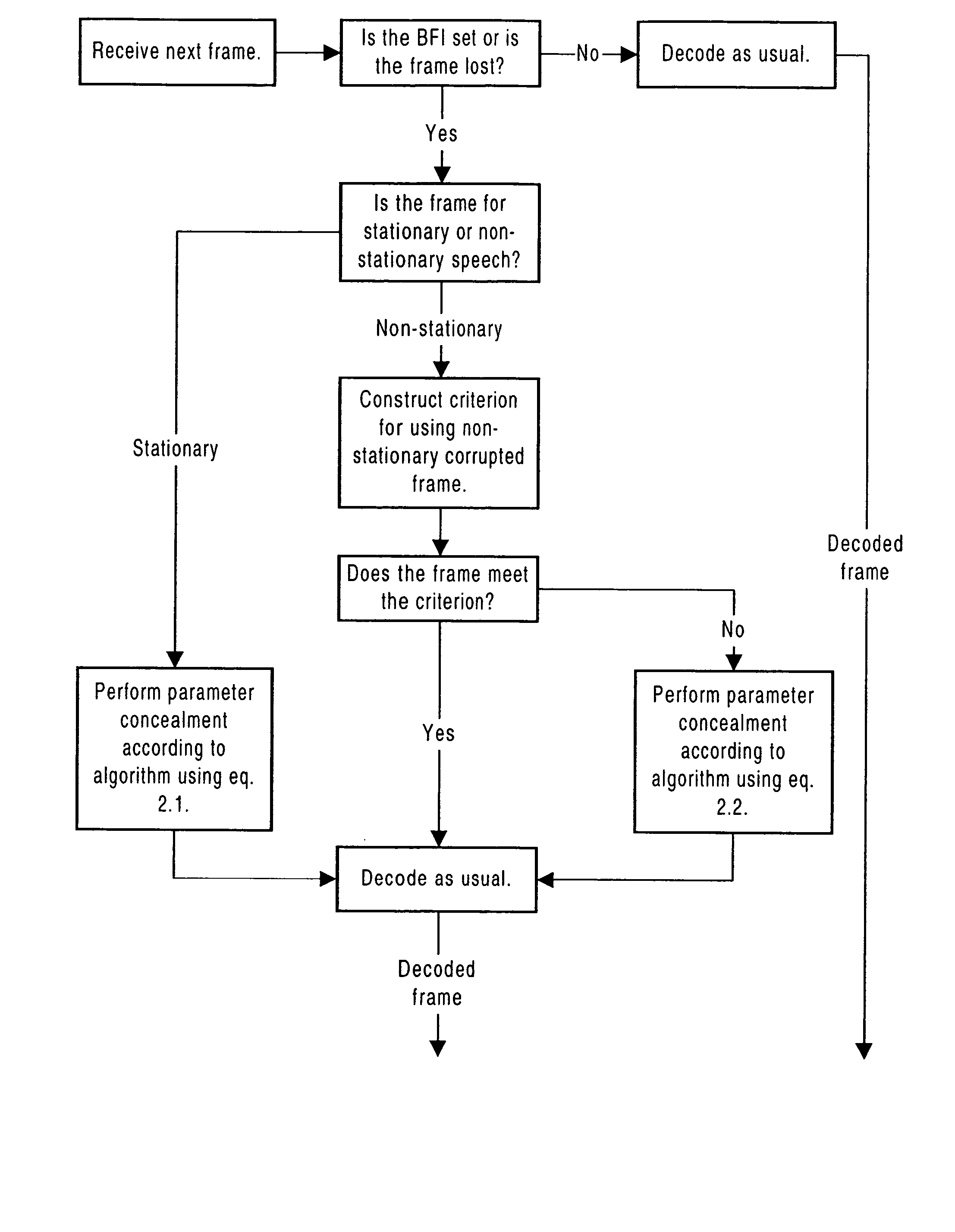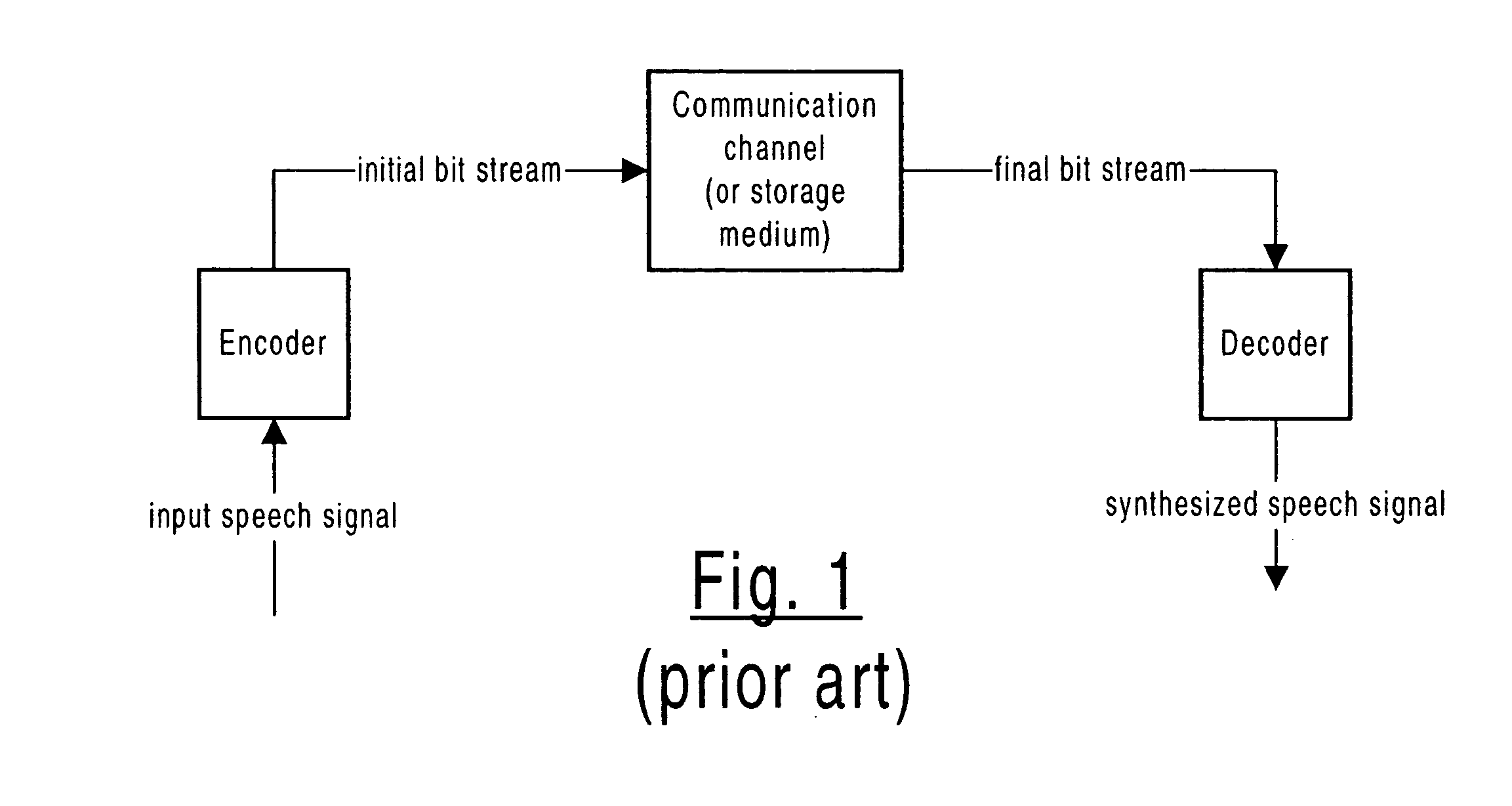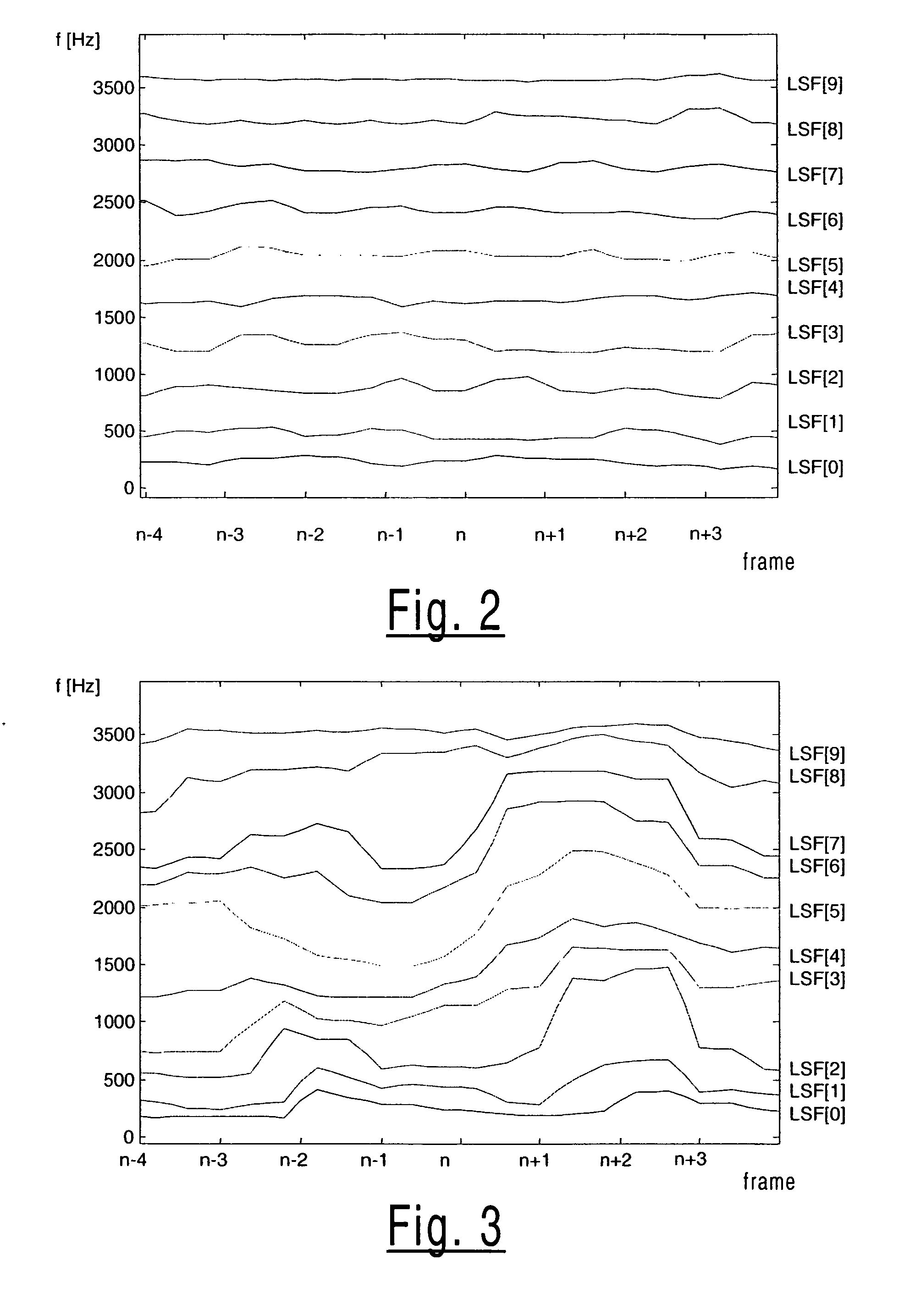Spectral parameter substitution for the frame error concealment in a speech decoder
a speech decoder and frame error technology, applied in the field of speech decoders, can solve the problems of frame errors, loss of frames, and corrupted frames, and poor communication channels through which the encoded speech parameters are transmitted
- Summary
- Abstract
- Description
- Claims
- Application Information
AI Technical Summary
Problems solved by technology
Method used
Image
Examples
Embodiment Construction
[0036] According to the invention, when a bad frame is detected by a decoder after transmission of a speech signal through a communication channel (FIG. 1), the corrupted spectral parameters of the speech signal are concealed (by substituting other spectral parameters for them) based on an analysis of the spectral parameters recently communicated through the communication channel. It is important to effectively conceal corrupted spectral parameters of a bad frame not only because the corrupted spectral parameters may cause artifacts (audible sounds that are obviously not speech), but also because the subjective quality of subsequent error-free speech frames decreases (at least when linear predictive quantization is used).
[0037] An analysis according to the invention also makes use of the localized nature of the spectral impact of the spectral parameters, such as line spectral frequencies (LSFs). The spectral impact of LSFs is said to be localized in that if one LSF parameter is adv...
PUM
 Login to View More
Login to View More Abstract
Description
Claims
Application Information
 Login to View More
Login to View More - R&D
- Intellectual Property
- Life Sciences
- Materials
- Tech Scout
- Unparalleled Data Quality
- Higher Quality Content
- 60% Fewer Hallucinations
Browse by: Latest US Patents, China's latest patents, Technical Efficacy Thesaurus, Application Domain, Technology Topic, Popular Technical Reports.
© 2025 PatSnap. All rights reserved.Legal|Privacy policy|Modern Slavery Act Transparency Statement|Sitemap|About US| Contact US: help@patsnap.com



